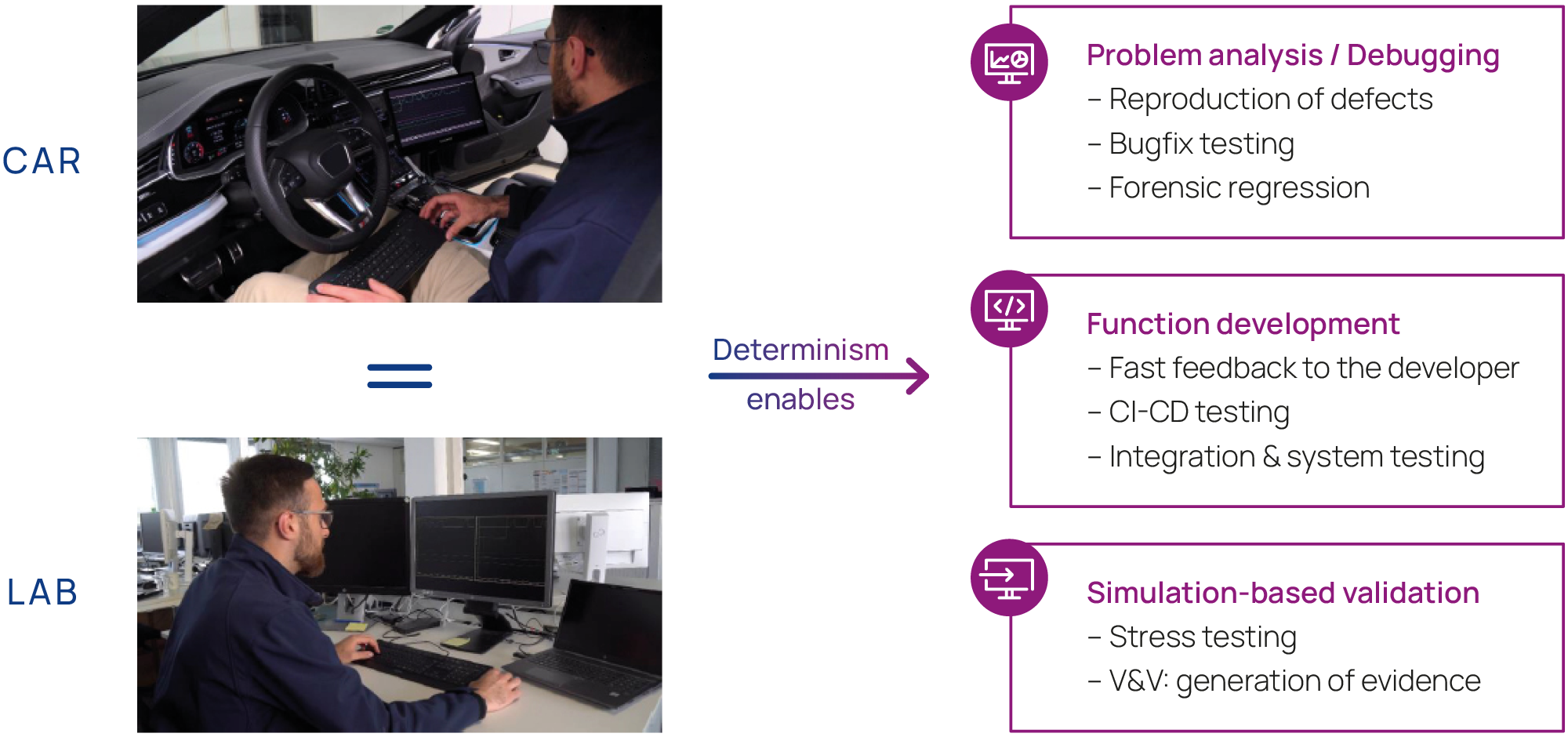Deterministic Recompute and Virtual Drives
Revolutionary concepts to accelerate development
Automated Driving Systems (ADS) navigate a complex terrain of challenges, demanding precision and reliability in development and testing. Our revolutionary concept of "Deterministic Recompute" coupled with the innovative use of "Virtual Drives" transforms the landscape of Automated Driving, providing a robust solution to validation challenges.
Deterministic Recompute and Virtual Drives
At its core, recompute is a task where recorded or artificially generated data is processed by the ADS system. Deterministic recompute ensures that the output remains consistent given the same input. Complementing this, Virtual Drives offer a simulated environment to replicate real-world driving scenarios, creating a controlled digital space for testing without the need for extensive physical on-the-road validation.
Non-deterministic behavior in ROS
Robot Operating System (ROS) is an open-source middleware framework designed for robotic systems development. In the context of Advanced Driver Assistance Systems (ADAS) and Autonomous Driving (AD), ROS is often used for pre-development various components within a vehicle such as perception systems (e.g., cameras, lidar, radar), control systems or path planning algorithms.
While ROS provides has several key capabilities required for developing ADAS / AD systems, recomputing a system with same input data can lead to different results.
Deterministic behavior in EDMS
ETAS Deterministic Middleware Solution is specifically designed for the development of ADAS / AD systems.
Recompute with same input data provides the same results.
Applications of Deterministic Recompute
There are three major application areas of deterministic recompute:

1. Problem Analysis / Debugging
In the event of field issues, the tandem use of Deterministic Recompute and Virtual Drives allows developers to reproduce faults on their desks. This forensic capability streamlines issue investigation, aiding in debugging and swift fault localization.
2. Function Development
Deterministic Recompute, within the context of Virtual Drives, empowers developers to swiftly analyze new functions or modifications, shortening feedback cycles and accelerating the development process. The combination ensures a seamless integration of virtual environments for precise testing.
3. Simulation-based Validation
Continuous validation requires robust regression testing. Deterministic Recompute and Virtual Drives collaborate to facilitate large-scale, reproducible regression tests with every software change. This not only ensures ongoing software reliability but also aligns seamlessly with the broader Verification and Validation (V&V) strategy.
Why Deterministic Recompute and Virtual Drives?
In the safety-critical automotive industry, adhering to ISO 26262 and ASIL–D standards is non-negotiable. Deterministic Recompute and Virtual Drives address this need comprehensively. Real-time execution, coupled with handling substantial data volumes and long recording durations, establishes them as indispensable tools for virtual testing.
The synergy of Deterministic Recompute and Virtual Drives extends beyond fulfilling virtual testing requirements. By reproducing system internal data instead of storing extensive datasets, it not only optimizes the testing process but also minimizes data storage requirements — a crucial aspect integrated seamlessly into the broader Verification and Validation (V&V) strategy.